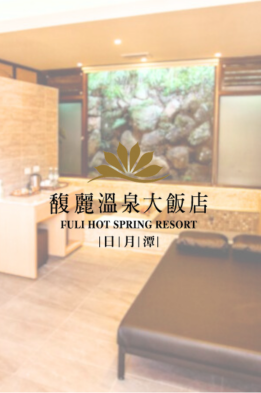What is a hotel?
A hotel is a place designed for short-term stays, offering essentials like comfortable rooms, housekeeping, and often a restaurant or bar. Most hotels keep things simple, focusing on convenience for business and leisure travellers, with the majority of revenue coming from room bookings.
Hotels, no matter if they’re basic or high-end establishments, begin with the same things: a clean room, friendly service, and a location that makes sense for the traveller. They usually keep operations streamlined, offering features like a front desk, daily housekeeping, Wi-Fi, and sometimes extras such as meeting rooms or a small gym. There are, of course, exceptions, with some ‘hotels’ offering truly world-class facilities, but these are outliers.
Guests staying at hotels often want a practical base rather than an all-in-one destination. Think business travellers in the city for a few nights or tourists who plan to explore local attractions rather than spend all day on-site. While some hotels add perks like pools or bars, they rarely aim for the “complete experience” model that resorts are known for.
What is a resort?
A resort is a self-contained destination that’s built for an immersive experience. Resorts typically include leisure facilities like pools, spas, golf courses, and organised activities, attracting guests who want relaxation and recreation in one place.
Unlike hotels, which are often a base for exploring the area, resorts aim to keep guests on-site by providing everything they need in one location. That can include multiple dining options, wellness services, entertainment, sports, and even shopping. The goal is to create a destination where guests don’t feel the need to leave.
Guests choose resorts for convenience and experience. Think couples looking for a romantic getaway, families after an activity-packed holiday, or travellers who want to relax without planning every detail. Resorts thrive in destinations like beach towns, ski regions, and remote scenic areas where the property itself becomes the main attraction.
Key takeaways:
- Hotels may focus on short stays and practicality, not full-scale experiences. Most revenue comes from room bookings, with extras playing a smaller role. They are best suited to cities, business hubs, and transit locations where location drives demand.
- Resorts offer a full-service experience, from dining to activities and wellness. Revenue comes from multiple streams, not just rooms; fees and amenities drive TRevPAR. Ideal for destination spots where guests stay for the experience, not just the location.
Table of contents
Why is it important to understand the hotel vs resort difference?
Knowing the difference between a hotel and a resort helps you make smarter decisions about positioning, pricing, and guest experience. Misalignment can lead to missed revenue opportunities, operational inefficiencies, and guest dissatisfaction.
The line between hotels and resorts has blurred for many guests, but for operators, the distinction is critical. Each model comes with different guest expectations and operational demands. A hotel focuses on short stays and convenience, while a resort is a destination experience that requires more services, staff, and investment in amenities.
Understanding this difference also influences revenue strategy. Resorts generate higher ancillary revenue because they provide more options for guests to spend on-site. For example, spa revenue per occupied room grew 27.7% at resort-area spas between 2018–2022, and resort fees can add up to $42.41 per night, or roughly 11% of a guest’s bill. This boost in TRevPAR can make a resort model appealing, but it also comes with higher operational complexity and cost.
If you mislabel or misposition your property, you risk disappointing guests. Someone booking what they think is a resort expects curated activities and full amenities; failure to deliver can harm your reviews and brand perception. On the other hand, overspending on resort-style features when your guests only want a functional stay can damage profitability.
Key takeaways:
- Positioning yourself as a hotel versus a resort impacts guest expectations and satisfaction.
- Resorts can boost TRevPAR through ancillary revenue, but require higher investment.
- Misalignment between your model and your guests’ needs leads to lost revenue and negative reviews.
Capture every revenue stream Whether you're driving room revenue as a hotel, or maximising total guest spend through resort amenities, SiteMinder unifies your pricing, inventory, and packages across all channels in real time.
How to determine if your property should be a hotel or a resort?
To determine if your property should be a hotel or a resort, start by looking at what you already have: your location, facilities, and typical guests. If you can deliver a self-contained experience that drives meaningful revenue beyond rooms, shifting toward a resort model may make sense. Otherwise, a hotel setup that emphasises convenience and fast turnover is likely the better fit.
What are the key revenue differences between hotels and resorts
- With 65% of an average hotel’s revenue still coming from rooms, day-to-day operations revolve around filling beds and optimising rate rather than juggling spa schedules or excursion rosters.
- Because 56% of a major wellness resort’s takings now stem from add-ons such as spa, dining, and activities, managers there prioritise programming, F&B concepts, and retail partnerships ahead of classic RevPAR tweaks.
- When 50.8% of U.S. resorts can add an average $42 nightly fee while only 2.8% of hotels do the same, branding as a resort unlocks a built-in pricing lever that lifts ADR without overt rate hikes, making positioning a revenue decision as much as a marketing one.
Beyond these revenue advantages, successfully positioning your property as a resort requires carefully evaluating whether you have, or can develop, the physical infrastructure and service offerings that justify premium pricing and extended stays.
The following factors will determine if your property can credibly deliver on resort expectations:
Services & facilities
Consider the physical assets you control today. Resorts thrive on leisure amenities such as pools, spas, and kids’ clubs, but every extra feature raises capital and staffing costs. A soft-goods upgrade can run USD $9,200–$13,300 per key according to Nehmer and HVSD’s hotel cost estimating guide, so weigh that against projected returns before breaking ground.
Types of guests
Your existing clientele is the clearest signal. Business travellers who stay only a night or two rarely use elaborate facilities; they want speed, reliable Wi-Fi, and a decent breakfast. Families, couples, and long-stay leisure guests will pay more for activities and on-site convenience. If you already attract that crowd, adopting a resort identity may unlock higher rates and longer stays.
Activities
The promise of curated experiences sets a resort apart from a standard hotel. Daily yoga, guided hikes, or paddle-board lessons boost guest spend and satisfaction but require space, instructors, and scheduling. If on-site activities are not realistic, you can still offer resort-like packages by partnering with nearby tour operators and attractions.
Food & beverage
Resorts usually run multiple dining outlets and turn meals into a core revenue stream rather than just an amenity. While traditional hotels collect about 25% of revenue from F&B, resorts can lift that share above 30% with themed restaurants, pool bars, and grab-and-go kiosks. Expanding kitchens and hiring talent add complexity but can pay off handsomely.
Location
Ask whether your setting carries “destination” appeal. Beachfront plots, mountain valleys, and lakeside retreats support a resort concept because the surroundings are part of the experience. Urban centres and airport corridors favour a hotel model based on proximity and efficiency. Land footprint matters too: sprawling acreage accommodates a resort campus, whereas a tight city block does not.
Key takeaways:
- Resorts boost ancillary revenue but demand higher capital and operating costs.
- Hotels excel when location and efficiency matter more than all-in-one experiences.
- Match your amenities and space to guest expectations before committing to a resort identity.
How can you manage resort vs hotel offerings effectively?
Running a profitable property comes down to tight operations and the right tech stack. A modern PMS, channel manager, and booking engine keep rates, inventory, and upsells aligned, freeing you to focus on guest experience instead of admin.
Profit comes from strong operations backed by the right tech, so organise around the levers you can actually pull.
Keep your tech stack aligned
Run a modern PMS with a channel manager and booking engine so rates, inventory, and upsells stay in sync across every touchpoint. This reduces manual updates, cuts errors, and gives you time back to shape offers guests actually want. Link your stack with SiteMinder’s channel manager and booking engine to keep everything moving in real time.
Grow visibility and protect margins
Most reservations now start online, so real-time rate and inventory sync across OTAs, metasearch, and your website is non-negotiable. Pairing a channel manager with a SiteMinder booking engine helps shift mix toward direct business, where bookings averaged US $519 in 2024 versus US $320 on OTAs, and automated pricing rules reduce costly parity slips.
Match tactics to your property type
Resorts thrive on packages and ancillary spend, so bundle spa, dining, or activities and surface them during booking; hotels win on speed with mobile check-in, digital keys, and simple upsells like late checkout or breakfast to lift turnover and lower labour costs. With integrated data flowing through your PMS, you can track channel mix, pickup, and TRevPAR in real time and adjust promotions before gaps appear.
